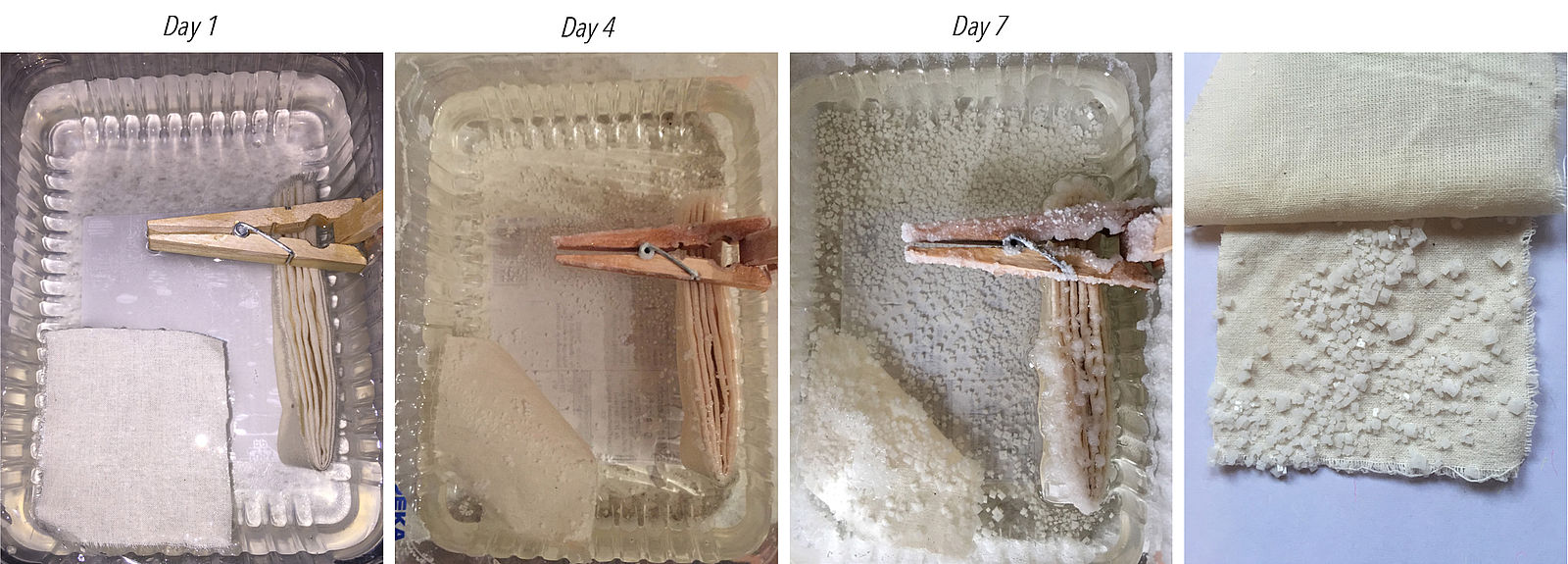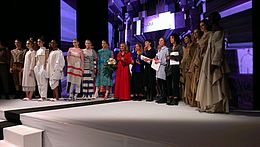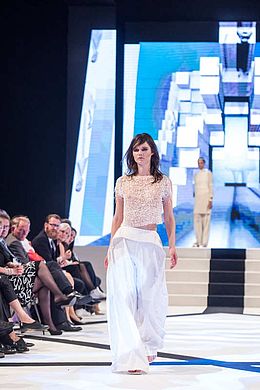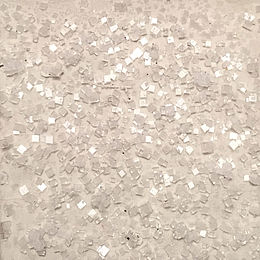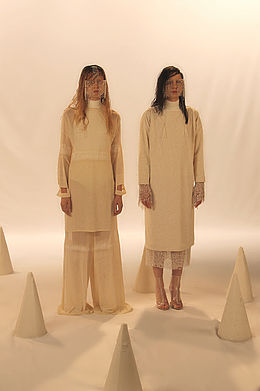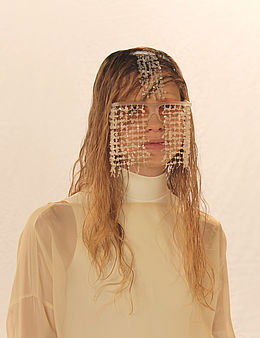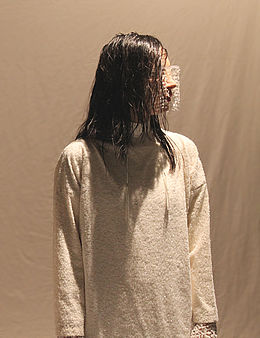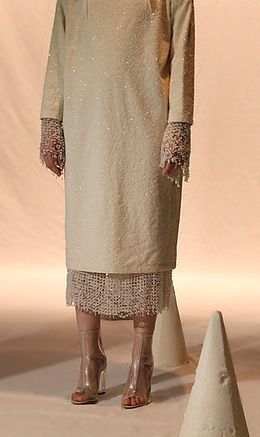Apolda | European Design Award
DANA RENÉE HAREL | 2017
Salt & Paper
A womenswear collection with textiles made from table and sea salt crystals, organically grown on the fabric, and patterns utilizing paper folding and cutting techniques. The salt crystals on the garments are in a continuous process of metamor- phosis, slowly losing more and more crystals, symbolizing the passage of time and a state of constant change. The collection consists of 7 out ts.
Inspiration:
Salt & Paper Is inspired by a journey of self discovery and the question that seems to follow all design students; Who are you as a designer?
With time and timelessness as one of it’s main themes, the collection is meant to symbolize a moment in time where a person is no longer a student and possesses all the knowledge one might need, but none of the experience. Both full and empty at the same time. The message the collection is embracing the power of non-singularity, of being part of a group and nding your own pure and strong voice within it.
Salt and paper were selected as symbols to express this in a visual form. Though seemingly unrelated at rst, salt and paper are surprisingly similar in nature. They are both a symbol of purity, natural and extremely powerful, but most impor- tantly they are also one of many, all starting out the same but once utilized, gain their true purpose and become unique.
Both salt and paper exist independently, that is, they are complete products, manufactured and produced for consump- tion, but they always need something to complete them and give them meaning. It seems that in our daily use of salt and paper we recognize their power not only for what they are, but for what they can be. By using paper as the receptacle, in this case the pattern base, and salt as the substance, meaning the textile applications, the collection attempts to mimic salt and paper’s roles in life, with paper always needing a vessel and salt always being a vessel. By putting them together in this way they will hopefully both nd their purpose, making them complete, transforming them from nothing to everything.
Another important concept in the collection is that of preservation. Salt is used as a food preservative and the paper pre- serves ideas. The collection attempts to preserve a moment in time, while at the same time acknowledge that which cannot be preserved by being completely temporary, with enough time all the crystals will fall, and the moment will be gone.
Design:
The designs vary somewhere between avant-garde and elevated ready-to-wear, with an emphasis on textile design.
The look of the collection is an A-line or H-line silhouette, with protruding shapes and exaggerated features. The loose oversized pieces and stiff, body deforming garments mix to create a look that erases the curves of the body in favor of a sharp, straight and at appearance. The square was selected as the dominant shape of the collection as it is the standard shape for most industrial paper as well as the shape of a salt crystal Under a microscope.
All the materials are made from natural bers such as cotton, silk and virgin wool. The use of light translucent materials like silk chiffon with rigid materials such as popeline and drill weave cotton give the collection it’s mix of soft and stiff.
Many of the design details are symbols of strength and purity. Purity is expressed by the material and color selection. All the fabrics used in the collection are made from natural material, and the dominant color is white and natural ber tones. Variations on the color white as the base colors for the collection were chosen for their symbolic purity, and is also the clear choice, being the color of salt and paper.
Strength is expressed by powerful silhouettes and unusual proportions that create an authoritative, strong gure. the collection is meant to commend the focus of the observer and attract the eye by using unconventional shapes that distort or somehow alter the human body.
Salt Crystals Growing Technique:
First water is heated to about 50 degrees celsius. Then, enough NaCl is stirred into the water, until a point is reached, at which no more salt can be dissolved in the water, and the solution is said to be saturated. The solution is then ltered out into a container to remove any undissolved salt, that can stimulate unwanted growth around them. The fabric is then dipped in the solution and left to rest in it . After a few days one start to noticing the appearance of crystals on the surface of the fabric. The bers of the fabric, seem to be growth centers, around which the growth process initially occurs. After typically 7-10 days the fabric is taken out of the solution and left to dry.
